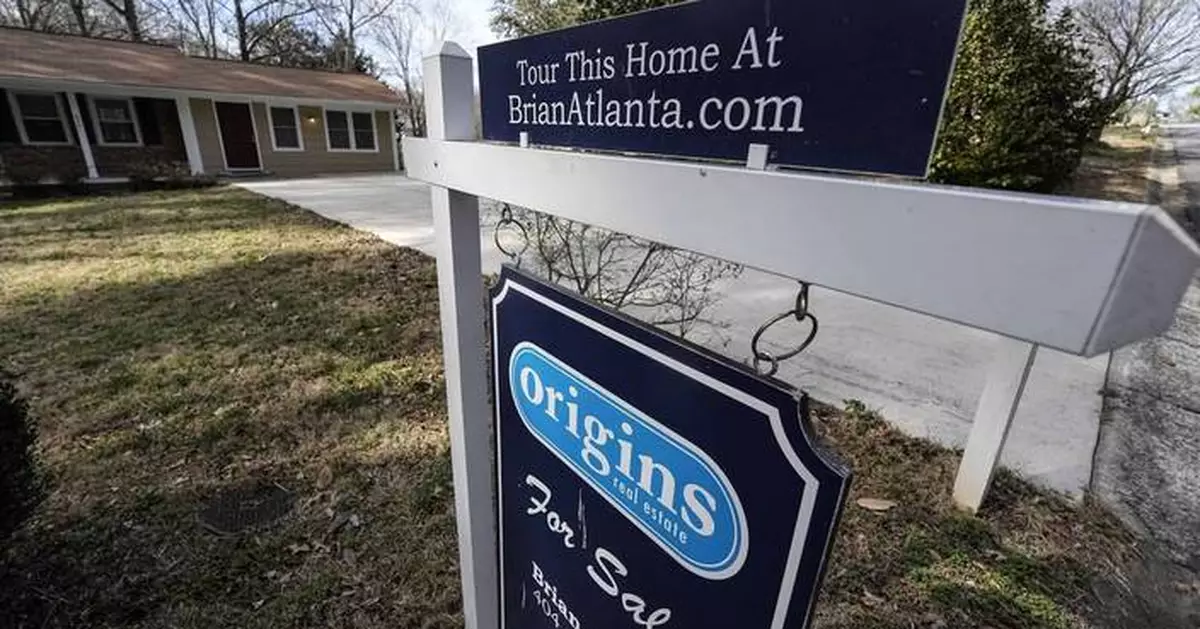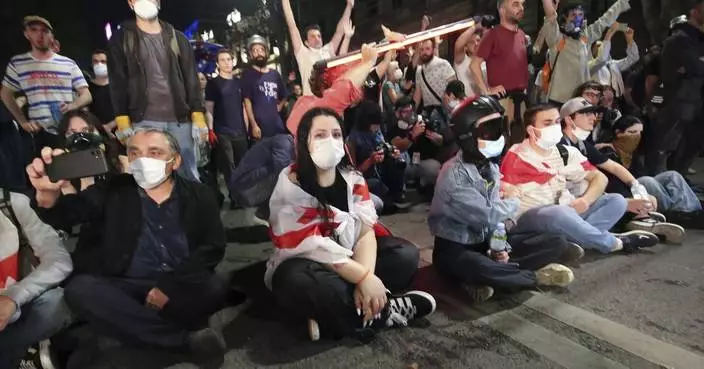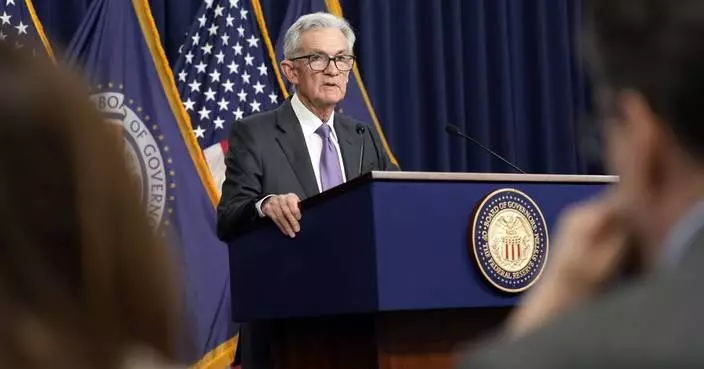LOS ANGELES (AP) — Prospective homebuyers are facing higher costs to finance a home with the average long-term U.S. mortgage rate moving above 7% this week to its highest level in nearly five months.
The average rate on a 30-year mortgage rose to 7.1% from 6.88% last week, mortgage buyer Freddie Mac said Thursday. A year ago, the rate averaged 6.39%.
When mortgage rates rise, they can add hundreds of dollars a month in costs for borrowers, limiting how much they can afford at a time when the U.S. housing market remains constrained by relatively few homes for sale and rising home prices.
“As rates trend higher, potential homebuyers are deciding whether to buy before rates rise even more or hold off in hopes of decreases later in the year,” said Sam Khater, Freddie Mac’s chief economist. “Last week, purchase applications rose modestly, but it remains unclear how many homebuyers can withstand increasing rates in the future.”
After climbing to a 23-year high of 7.79% in October, the average rate on a 30-year mortgage had remained below 7% since early December amid expectations that inflation would ease enough this year for the Federal Reserve to begin cutting its short-term interest rate.
Mortgage rates are influenced by several factors, including how the bond market reacts to the Fed’s interest rate policy and the moves in the 10-year Treasury yield, which lenders use as a guide to pricing home loans.
But home loan rates have been mostly drifting higher in recent weeks as stronger-than-expected reports on employment and inflation have stoked doubts over how soon the Fed might decide to start lowering its benchmark interest rate. The uncertainty has pushed up bond yields.
The yield on the 10-year Treasury jumped to around 4.66% on Tuesday — its highest level since early November — after top officials at the Federal Reserve suggested the central bank may hold its main interest steady for a while. The Fed wants to get more confidence that inflation is sustainably heading toward its target of 2%.
The yield was at 4.64% at midday Thursday after new data on applications for unemployment benefits and a report showing manufacturing growth in the mid-Atlantic region pointed to a stronger-than-expected U.S. economy.
“With no cuts to the federal funds rate imminent and with the economy still strong, there is no reason to see downward pressure on mortgage rates right now,” said Lisa Sturtevant, chief economist at Bright MLS. “It seems increasingly likely that mortgage rates are not going to come down any time soon."
Sturtevant said it's likely the average rate on a 30-year mortgage will hold close to 7% throughout the spring before easing to the mid-to-high 6% range into the summer.
Other economists also expect that mortgage rates will ease moderately later this year, with forecasts generally calling for the average rate to remain above 6%.
Mortgage rates have now risen three weeks in a row, a setback for home shoppers this spring homebuying season, traditionally the housing market’s busiest time of the year.
Sales of previously occupied U.S. homes fell last month as home shoppers contended with elevated mortgage rates and rising prices.
While easing mortgage rates helped push home sales higher in January and February, the average rate on a 30-year mortgage remains well above 5.1%, where was just two years ago.
That large gap between rates now and then has helped limit the number of previously occupied homes on the market because many homeowners who bought or refinanced more than two years ago are reluctant to sell and give up their fixed-rate mortgages below 3% or 4%.
Meanwhile, the cost of refinancing a home loan also got pricier this week. Borrowing costs on 15-year fixed-rate mortgages, often used to refinance longer-term mortgages, rose this week, pushing the average rate to 6.39% from 6.16% last week. A year ago it averaged 5.76%, Freddie Mac said.

FILE - A sign announcing a home for sale is shown on Feb. 1, 2024, in Kennesaw, Ga., near Atlanta. On Thursday, April 18, 2024, Freddie Mac reports on this week's average U.S. mortgage rates. (AP Photo/Mike Stewart, File)
MEXICO CITY (AP) — Volunteer searchers said they have found a clandestine crematorium on the edge of Mexico City, though it was unclear if evidence found at the scene would back up that claim.
It's the first time in recent memory that anyone claimed to have found such a body disposal site in the capital. In northern Mexico, drug cartels often use drums filled with diesel or caustic substances to burn or dissolve bodies, but up to now there has been little evidence of that in Mexico City.
Ceci Flores, a leader of one of the groups of so-called “searching mothers” from northern Mexico, announced on social media late Tuesday her team had found bones around a charred pit on the outskirts of the city.
Flores said the team had found bones, clandestine burial pits and ID cards at the site in a rural area of the city’s south side.
Ulises Lara, Mexico City's chief prosecutor, later said police went to the addresses listed on the cards and “found that both of the people to whom those cards belonged are alive and in good health.”
Lara said one of them, a woman, said her card and cell phone and had been stolen about a year ago, when thieves snatched her phone and ID card from her hands while she was stuck in traffic.
While that ruled out the possibility the woman's body could had been dumped there, it did suggest that criminals had used the site to dispose of evidence.
Lara said experts were investigating to determine the nature of the remains found, and whether they were human. The prosecutors office said it was also reviewing security camera footage and looking for possible witnesses.
The discovery, if confirmed, would be a political embarrassment for the ruling party, which has long governed Mexico City and claims the capital has been spared much of the drug cartel violence that afflicts other parts of the country.
That is largely due to the city's dense population, notoriously snarled traffic, extensive security camera network and large police force, which presumably make it hard for criminals to act in the same way they do in provincial areas.
But while the city is home to 9 million residents and the greater metropolitan area holds around 20 million, large parts of the south side are still a mix of farms, woods and mountains. In those areas, it is not unheard of for criminals to dump the bodies of kidnapping victim, but they seldom burn or bury them.
Volunteer searchers like Flores often conduct their own investigations, sometimes relying on tips from former criminals, because the government has been unable to help. The searchers have been angered by a government campaign to “find” missing people by checking their last known address, to see if they have returned home without advising authorities.
Activists claim that is just an attempt to reduce the politically embarrassing figures on the missing.
The searchers, mostly the mothers of the disappeared, usually aren’t trying to convict anyone for their relatives’ abductions. They say they just want to find their remains.
The Mexican government has spent little on looking for the missing. Volunteers must stand in for nonexistent official search teams in the hunt for clandestine graves where cartels hide their victims. The government hasn’t adequately funded or implemented a genetic database to help identify the remains found.
Victims’ relatives rely on anonymous tips, sometimes from former cartel gunmen, to find suspected body-dumping sites. They plunge long steel rods into the earth to detect the scent of death.
If they find something, the most authorities will do is send a police and forensics team to retrieve the remains, which in most cases are never identified. But such systematic searches have been rare in Mexico City.
At least seven of the activists searching for some of Mexico’s more than 100,000 missing people have been killed since 2021.

A member of the Mexico City Search Commission digs in an area where search volunteers said they found a clandestine crematorium in Tlahuac, on the edge of Mexico City, Wednesday, May 1, 2024. Ceci Flores, a leader of one of the groups of so-called "searching mothers" from northern Mexico, announced late Tuesday that her team had found bones around clandestine burial pits and ID cards, and prosecutors said they were investigating to determine the nature of the remains. (AP Photo/Ginnette Riquelme)
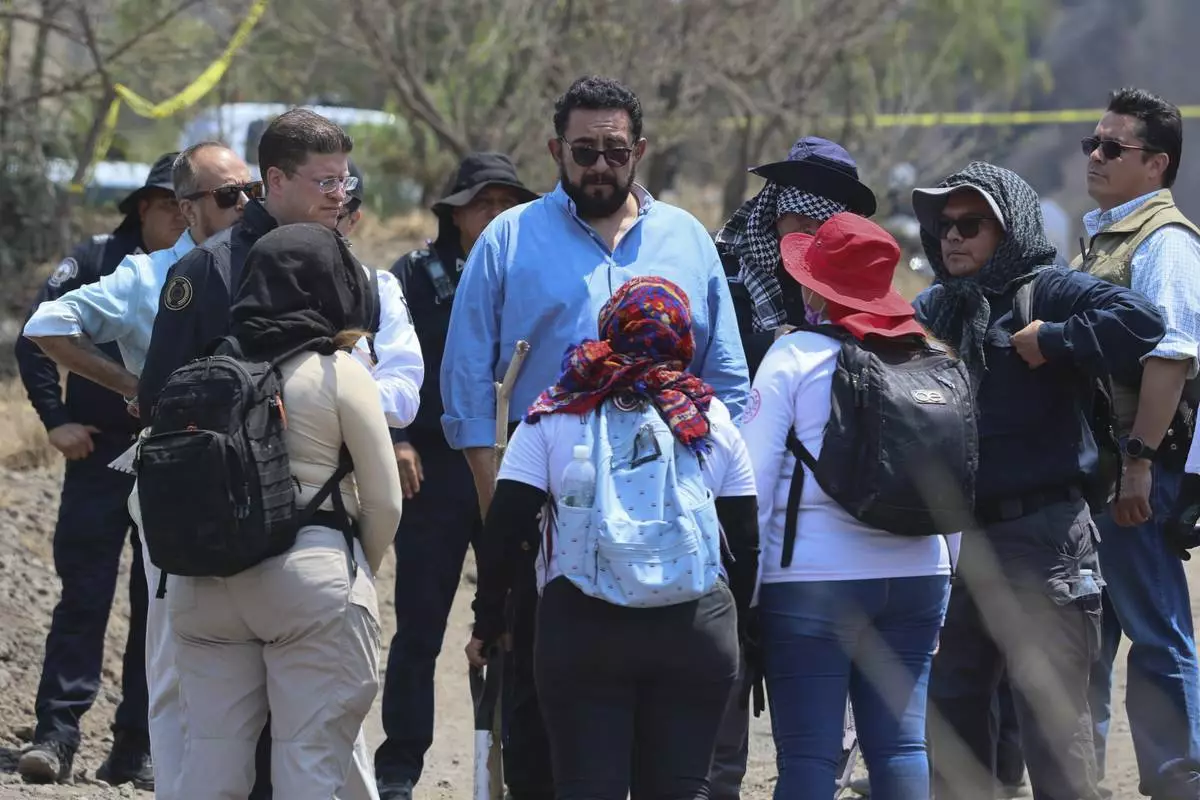
Mexico City interim Prosecutor Ulises Lara speaks with the mothers of missing children at the site where volunteer searchers said they found a clandestine crematorium in Tlahuac, on the edge of Mexico City, Wednesday, May 1, 2024. Ceci Flores, a leader of one of the groups of so-called "searching mothers" from northern Mexico, announced late Tuesday that her team had found bones around clandestine burial pits and ID cards, and prosecutors said they were investigating to determine the nature of the remains found. (AP Photo/Ginnette Riquelme)

A police officer escorts women carrying digging tools at the site where a clandestine crematorium was found in Tlahuac, on the edge of Mexico City, Wednesday, May 1, 2024. Third from right is Jacqueline Palmeros who has been searching for her disappeared daughter since 2020 in Mexico City, and second from right is María de Jesús Soria whose daughter disappeared in Veracruz in 2016, and whose remains were turned over to her in 2022. (AP Photo/Ginnette Riquelme)

National Guards stand at the site where volunteer searchers said they found a clandestine crematorium in Tlahuac, on the edge of Mexico City, Wednesday, May 1, 2024. Ceci Flores, a leader of one of the groups of so-called "searching mothers" from northern Mexico, announced late Tuesday that her team had found bones around clandestine burial pits and ID cards, and prosecutors said they were investigating to determine the nature of the remains found. (AP Photo/Ginnette Riquelme)
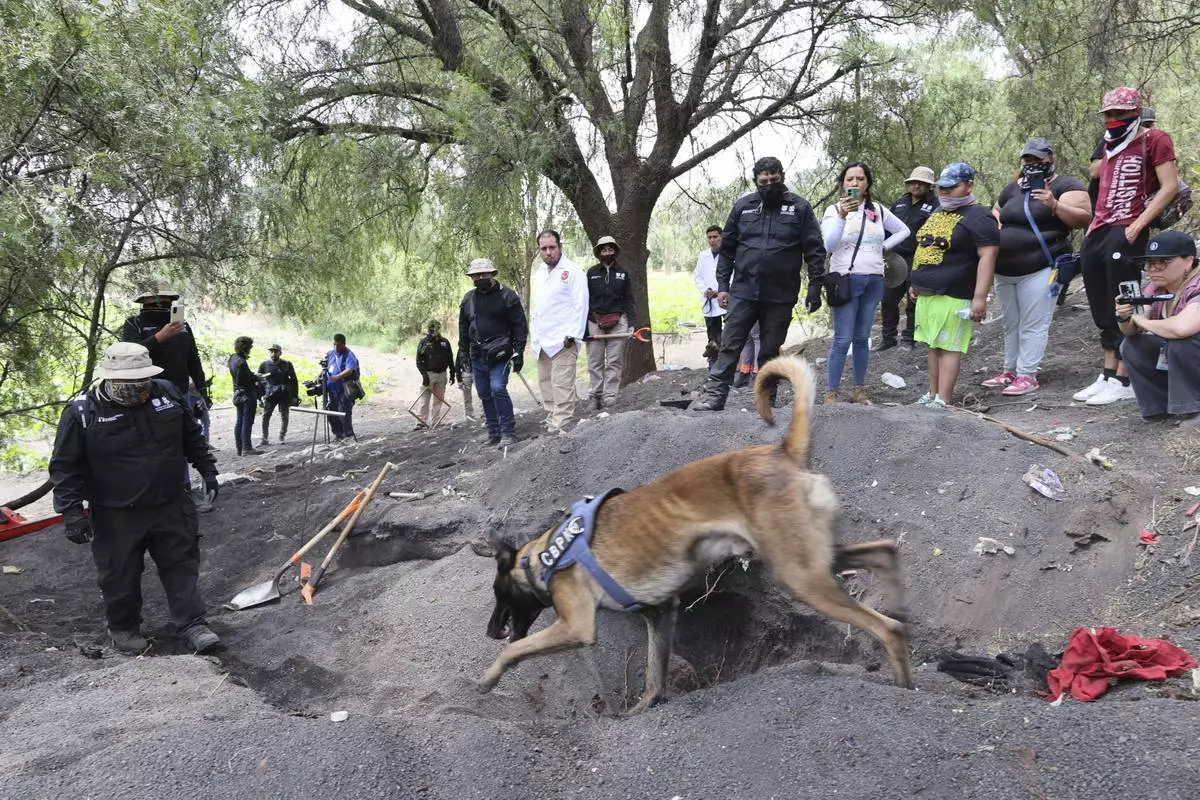
A search dog from the Mexico City Search Commission named Argos searches in an area where search volunteers said they found a clandestine crematorium in Tlahuac, on the edge of Mexico City, Wednesday, May 1, 2024. Ceci Flores, a leader of one of the groups of so-called "searching mothers" from northern Mexico, announced late Tuesday that her team had found bones around clandestine burial pits and ID cards, and prosecutors said they were investigating to determine the nature of the remains. (AP Photo/Ginnette Riquelme)

Women holding digging tools stand at the site where a clandestine crematorium was found, as the press and police stand by in Tlahuac, on the edge of Mexico City, Wednesday, May 1, 2024. A leader of one of the groups of so-called "searching mothers" from northern Mexico, announced late Tuesday that her team had found bones around clandestine burial pits and ID cards, and prosecutors said they were investigating to determine the nature of the remains. (AP Photo/Ginnette Riquelme)

A member of the Mexico City Search Commission uses a ground-penetrating radar in an area where volunteers said they have found a clandestine crematorium in Tlahuac, on the edge of Mexico City, Wednesday, May 1, 2024. Ceci Flores, a leader of one of the groups of so-called "searching mothers" from northern Mexico, announced late Tuesday that her team had found bones around clandestine burial pits and ID cards, and prosecutors said they were investigating to determine the nature of the remains. (AP Photo/Ginnette Riquelme)
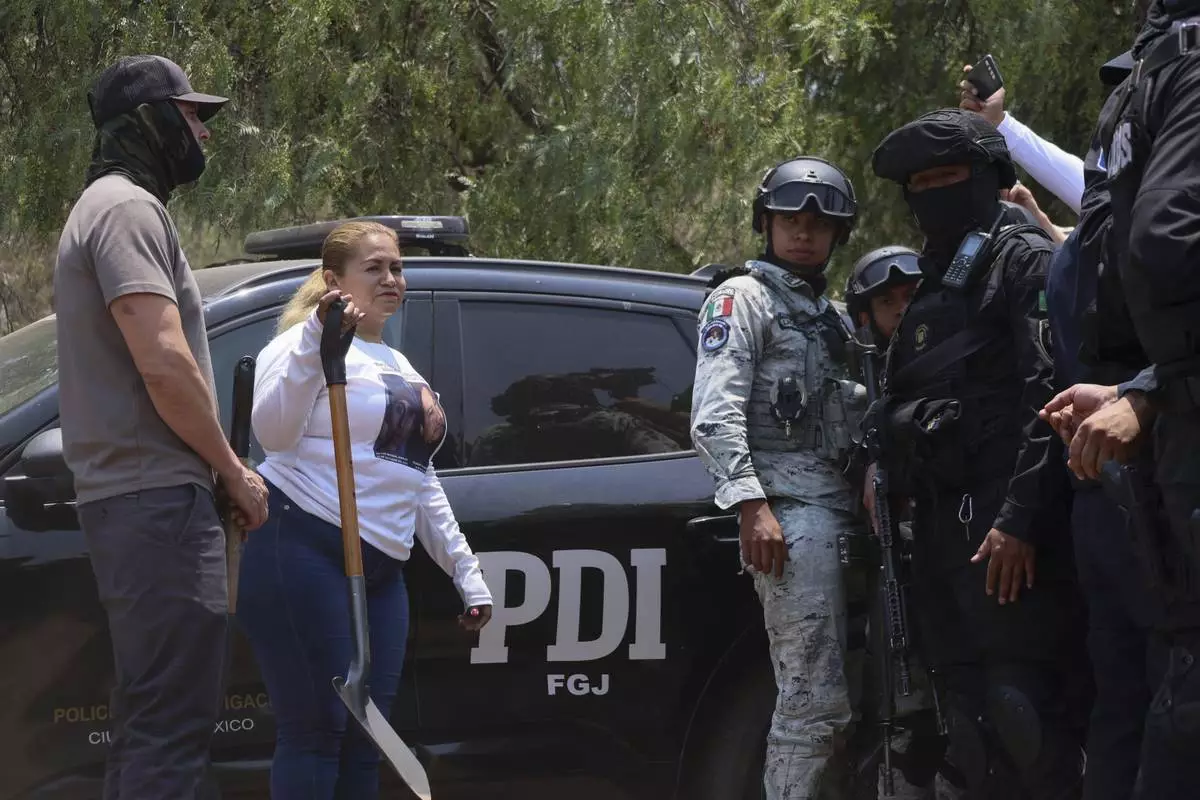
Ceci Flores, leader of a "searching mothers" group from northern Mexico, arrives with a shovel at the site where she said her team found a clandestine crematorium in Tlahuac, on the edge of Mexico City, Wednesday, May 1, 2024. Flores announced late Tuesday that her team had found bones around clandestine burial pits and ID cards, and prosecutors said they were investigating to determine the nature of the remains. At left is activist Bryan Lebaron. (AP Photo/Ginnette Riquelme)

Police stand by as members of the National Search Commission use rakes to search an area where volunteers said they found a clandestine crematorium in Tlahuac, on the edge of Mexico City, Wednesday, May 1, 2024. Ceci Flores, a leader of one of the groups of so-called "searching mothers" from northern Mexico, announced late Tuesday that her team had found bones around clandestine burial pits and ID cards, and prosecutors said they were investigating to determine the nature of the remains found. (AP Photo/Ginnette Riquelme)

Police stand guard in an area where volunteers said they found a clandestine crematorium in Tlahuac, on the edge of Mexico City, Wednesday, May 1, 2024. Ceci Flores, a leader of one of the groups of so-called "searching mothers" from northern Mexico, announced late Tuesday that her team had found bones around clandestine burial pits and ID cards, and prosecutors said they were investigating to determine the nature of the remains found. (AP Photo/Ginnette Riquelme)

Police tape off the area where volunteers said they have found a clandestine crematorium in Tlahuac, on the edge of Mexico City, Wednesday, May 1, 2024. Ceci Flores, a leader of one of the groups of so-called "searching mothers" from northern Mexico, announced late Tuesday that her team had found bones around clandestine burial pits and ID cards, and prosecutors said they were investigating to determine the nature of the remains found. (AP Photo/Ginnette Riquelme)

Women carry digging tools where they found a clandestine crematorium in Tlahuac, on the edge of Mexico City, Wednesday, May 1, 2024. Ceci Flores, a leader of one of the groups of so-called "searching mothers" from northern Mexico, announced late Tuesday that her team had found bones around clandestine burial pits and ID cards, and prosecutors said they were investigating to determine the nature of the remains found. (AP Photo/Ginnette Riquelme)

A member of the National Search Commission uses a ground-penetrating radar in an area where volunteers said they have found a clandestine crematorium in Tlahuac, on the edge of Mexico City, Wednesday, May 1, 2024. Ceci Flores, a leader of one of the groups of so-called "searching mothers" from northern Mexico, announced late Tuesday that her team had found bones around clandestine burial pits and ID cards, and prosecutors said they were investigating to determine the nature of the remains found. (AP Photo/Ginnette Riquelme)



